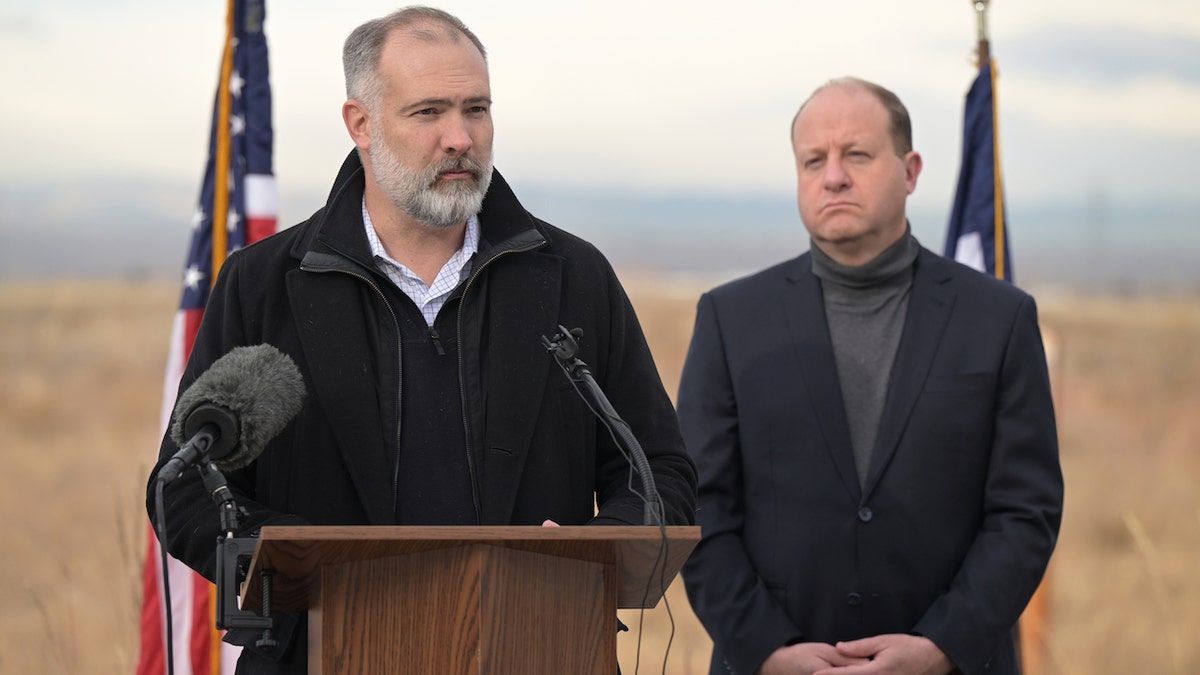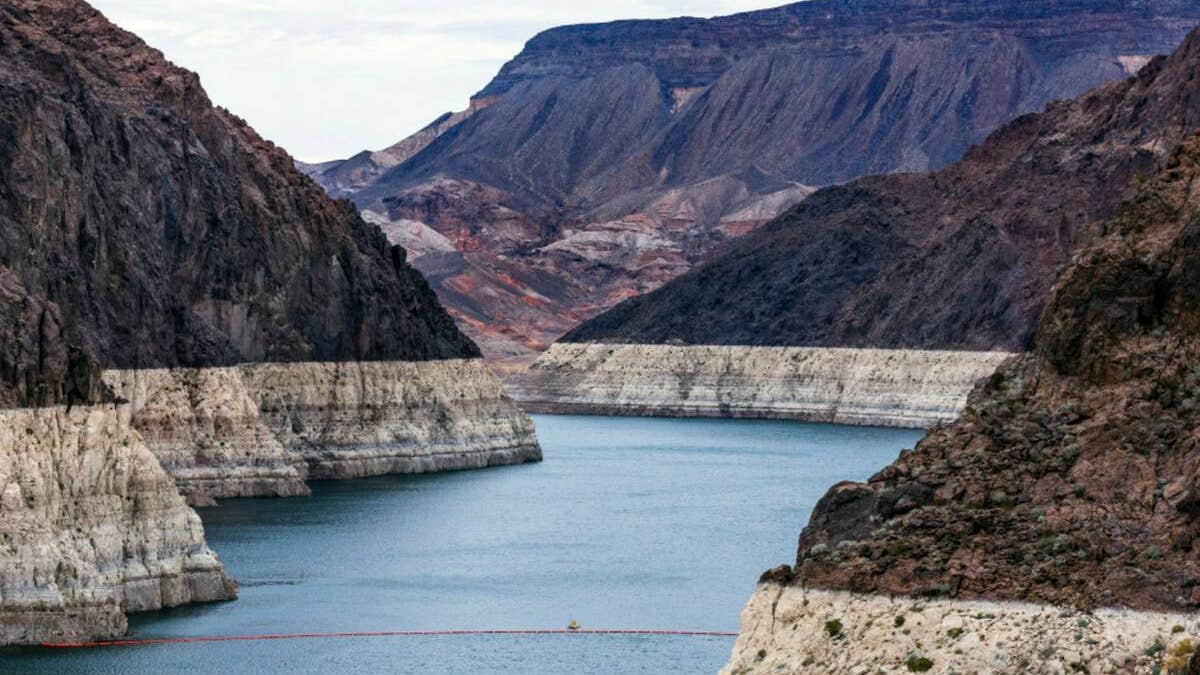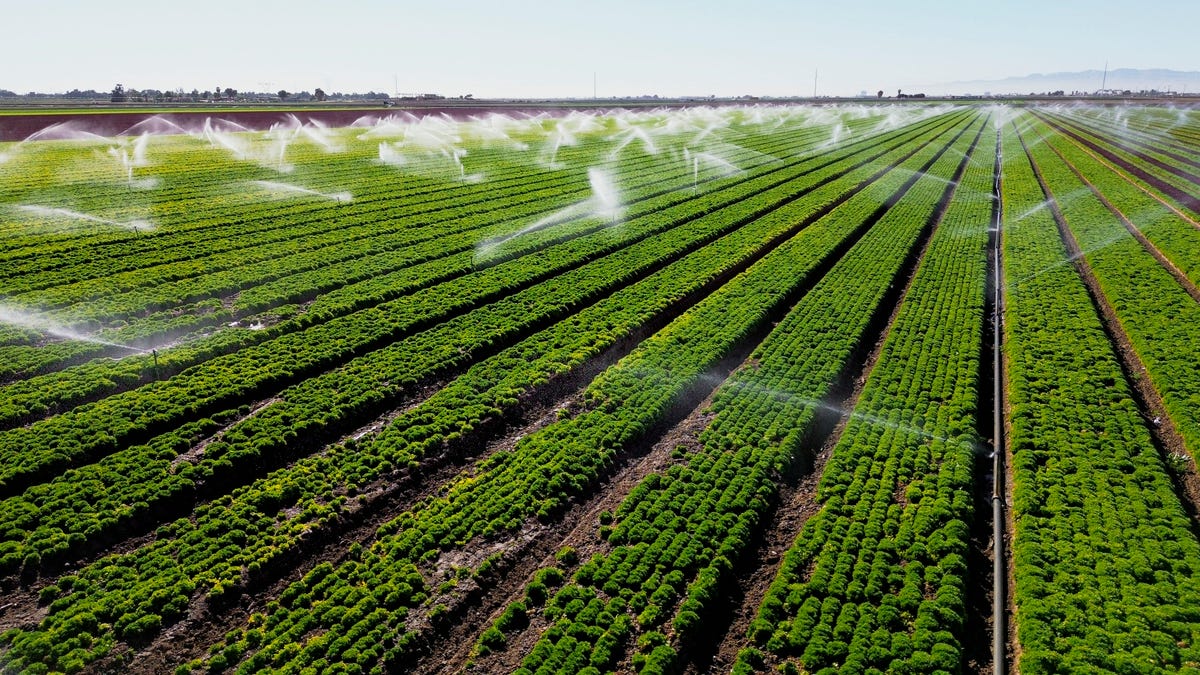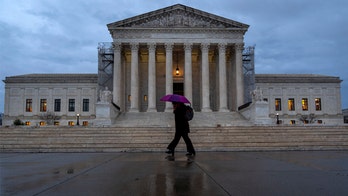China has ‘fooled’ the White House on their environmental values: Marc Morano
ClimateDepot.com publisher Marc Morano reacts to Energy Secretary Jennifer Granholm claiming the U.S. can 'learn from what China is doing' on climate change on ‘Fox & Friends Weekend.’
The Biden administration proposed actions Tuesday that would significantly reduce water supplies in seven western states amid severe drought conditions that stretch back decades.
The Department of the Interior (DOI) released a draft proposal that highlighted two potential actions it could take to combat the Colorado River Basin's deteriorating water levels. The two proposals would each consist of federally-mandated supply reductions for states that are dependent on the river system which provides water for more than 40 million Americans and is vital for western states' economies.
"Failure is not an option," Tommy Beaudreau, the DOI's deputy secretary, said in a statement. "Recognizing the severity of the worsening drought, the Biden-Harris administration is bringing every tool and every resource to bear through the President’s Investing in America agenda to protect the stability and sustainability of the Colorado River System now and into the future."
In addition to the water it supplies to millions of Americans, the 1,450-mile Colorado River supports 5.5 million acres of agricultural lands, provides electricity to millions of residents through hydroelectric dams and has key recreational and ecological uses.

Deputy Secretary of the Interior Tommy Beaudreau speaks alongside Colorado Gov. Jared Polis in Commerce City, Colorado, on Dec. 14, 2022. (Hyoung Chang/The Denver Post via Getty Images)
Overall, the river provides water resources to seven states which are divided into two groups: the Upper Basin and Lower Basin. The Upper Basin consists of Colorado, New Mexico, Utah and Wyoming while the Lower Basin includes Arizona, California, and Nevada.
While Upper Basin states mainly receive water from smaller rivers that branch off the Colorado River, the Lower Basin states largely receive water pooled in Lake Powell, a man-made reservoir along the Utah-Arizona border, and Lake Mead, a reservoir along the Nevada-Arizona border. The Glen Canyon Dam in northern Arizona and Hoover Dam in southern Nevada are able to control water flows from the respective reservoirs to the Lower Basin states.
NEARLY 200 DEMS JOIN REPUBLICANS IN BLOCKING CHINA FROM BUYING RURAL LAND
As a result of decades of drought conditions, both Lake Powell and Lake Mead have dropped to lower levels, nearing so-called dead pool levels when water is unable to flow from a reservoir through its dam, threatening water supplies and the hydropower-generated electricity for tens of millions of Americans.
"Drought conditions in the Colorado River Basin have been two decades in the making," said Bureau of Reclamation Commissioner Camille Calimlim Touton. "To meet this moment, we must continue to work together, through a commitment to protecting the river, leading with science and a shared understanding that unprecedented conditions require new solutions."

The bathtub ring on Lake Mead is pictured in December 2022 in Boulder City, Nevada. (L.E. Baskow/Las Vegas Review-Journal via Getty Images)
According to federal data, Lake Powell's level has dropped to about 3,520 feet and Lake Mead's level has dropped to 1,046 feet. The two reservoir's respective dead pool levels are estimated to be 3,370 feet and 895 feet.
Under DOI's first proposed action laid out in a draft supplemental environmental impact statement Tuesday, Lower Basin states would undergo water supply reductions based on seniority of the entities that receive water from the reservoirs.
JOE MANCHIN BLASTS BIDEN ADMIN FOR CEDING CONTROL TO CCP ON GREEN ENERGY: 'PATHETIC'
Such a proposal would benefit the agriculture industry in California including the Imperial Irrigation District, a senior water rights holder that uses Colorado River water to supply about 500,000 acres of farmland, the Los Angeles Times reported. The action, though, would disproportionately negatively impact junior water rights holders like an Arizona entity that supplies water to Phoenix.
The DOI's second proposed action would result in even water supply reductions across the Lower Basin states regardless of seniority. That proposal would lead to less water for farmers in California that supply the U.S. with a large share of the nation's vegetables and fruits.
Both potential actions would entail progressively deeper supply reductions based on how much Lake Mead's level declines. The federal government could cut supplies by up to two million acre-feet, the equivalent of 652 billion gallons of water.

This aerial view shows sprinklers watering a lettuce field in Holtville, California on Feb. 9, 2023. These fields and others in the Imperial Valley in southern California are dependent on the Colorado River. (SANDY HUFFAKER/AFP via Getty Images)
The DOI will also consider a no action alternative, an option in which the government continues to implement the current plan with no changes.
BIDEN NOMINEE WANTS TO HIJACK LITTLE-KNOWN AGENCY TO RAM THROUGH CLIMATE AGENDA
"Nevada has long been a leader in urban water efficiency, and our communities and citizens have a strong water conservation ethic," Republican Nevada Gov. Joe Lombardo said in a statement shared with Fox News Digital. "This is an important step in a multi-phased process to protect Lake Mead and put the Colorado River system on a more sustainable trajectory."
"I have directed our Colorado River representatives to remain actively engaged with state and federal partners and to make every effort to find consensus and agreement on a negotiated path forward," he continued. "Each of the 40 million Americans that use the river deserve a reliable water supply, but it will take sacrifice from all of us to make that a reality."
Colorado River Basin water reductions have been the subject of intense negotiations and debates among western states dependent on the river system.
CLICK HERE TO GET THE FOX NEWS APP
In late January, Nevada joined Arizona, Colorado, New Mexico, Utah and Wyoming in proposing water proportional reductions across states, an action which would impact California most. But notably absent from the agreement was California which proposed its own plan one day later that would lead to Arizona shouldering much of the reductions.
"California remains committed to developing a seven-state consensus that will protect the Colorado River system for the duration of the current guidelines," Colorado River Board of California Chairman JB Hamby said on Tuesday.
"California looks forward to closely coordinating and collaborating with our partners in the other Basin States, Basin Tribes, and Reclamation to review the draft SEIS in full."


























